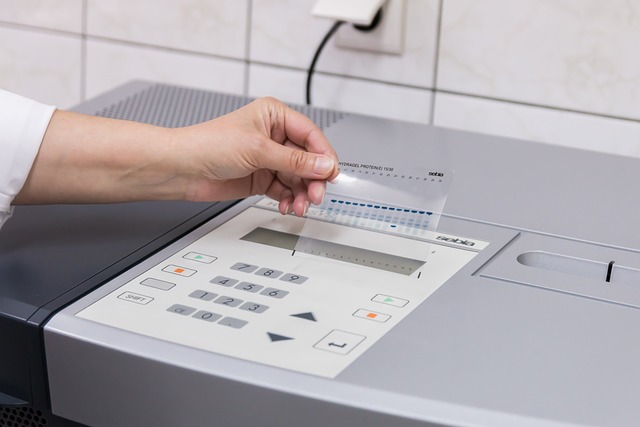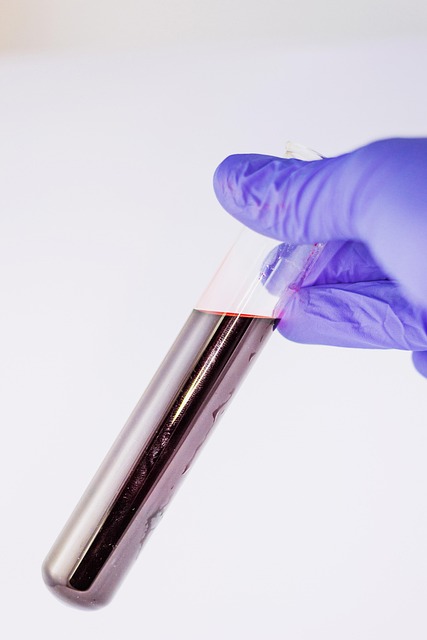Home testosterone test kits offer convenient monitoring of hormone levels with typical ranges around 270-1070 nmol/L for men. Interpret results considering age, health, and testing context, as factors like stress and time of day can affect readings. Consult a healthcare professional for accurate interpretation and guidance on low or high levels, ensuring proper evaluation over relying solely on home kit results.
Understanding your testosterone levels is key to men’s health, especially when using a home testosterone test kit. This guide will walk you through the process of interpreting your results, from understanding normal ranges to recognizing variations. We’ll explore common causes of low and high testosterone, and when it’s time to consult a medical professional. By the end, you’ll be equipped with knowledge to make informed decisions about your health.
- Understanding Your Testosterone Levels
- Decoding the Home Test Kit Results
- Normal Range vs. Low Testosterone
- High Testosterone: Possible Causes
- Interpreting Variations in Results
- When to Consult a Medical Professional
Understanding Your Testosterone Levels

Interpreting your home testosterone test results requires understanding the context and what is considered normal. Testosterone levels naturally fluctuate throughout the day, with peaks in the morning. For men, a typical total testosterone range is approximately 270-970 nanograms per deciliter (ng/dL) or 9.4-34.6 nanomoles per liter (nmol/L). However, these values can vary based on age and individual health factors. It’s important to know that home testosterone test kits provide a snapshot of your current levels at the time of testing, so consistent results over several days or weeks are more reliable than a single reading.
When considering whether it’s accurate to test testosterone at home, men’s health advocates recommend these kits as a convenient and accessible way to monitor hormone levels. The best home testosterone kits 2023 often include easy-to-follow instructions and provide results within minutes. While they may not offer the same level of precision as a clinical setting, they can be a useful tool for those interested in maintaining optimal men’s health. Remember, if your results are outside the typical range, it’s advisable to consult with a healthcare professional for further evaluation.
Decoding the Home Test Kit Results

Decoding your home testosterone test kit results is an essential step in understanding your hormone levels. Unlike traditional blood tests, these kits provide a convenient way to measure testosterone directly from a pinprick of blood on a finger prick. The results will typically be displayed as a numerical value indicating the concentration of testosterone in nanomoles per litre (nmol/L).
When interpreting home testosterone test results, remember that what does a normal home testosterone result look like can vary based on age and individual health. In general, levels between 270-1070 nmol/L are considered within the healthy range for adult men. Lower readings might suggest hypogonadism or low testosterone, while elevated levels could be indicative of conditions requiring medical attention. Always consult a healthcare professional to discuss your specific results and determine the best course of action based on how to interpret home testosterone test results accurately.
Normal Range vs. Low Testosterone

When interpreting results from a home testosterone test kit, understanding the normal range is key. The typical reference range for total testosterone levels in men is approximately 300-1000 nanograms per deciliter (ng/dL) or 10.4-34.7 nanomoles per liter (nmol/L). However, it’s important to note that this can vary slightly between labs and countries. A home testosterone test kit provides a convenient way to measure your levels, but it’s crucial to use a reliable and accurate kit, as brands may differ in their sensitivity and specificities.
Low testosterone, often referred to as low-T, is a common concern for many men, especially as they age. The symptoms can include decreased energy, muscle mass, libido, and overall well-being. However, it’s essential not to panic with an initial low result from a home test. There could be various factors influencing the reading, such as stress, lifestyle choices, or even improper testing procedures. If you consistently show low testosterone levels, it’s recommended to consult a healthcare professional who can order a more comprehensive panel of tests and provide guidance tailored to your specific situation, including how to ensure accurate results with a home testosterone test kit reviews and suggestions for optimal health.
High Testosterone: Possible Causes

High levels of testosterone can be attributed to various factors, as indicated by results from a home testosterone test kit. One common cause is simply natural fluctuations in hormone levels. Testosterone production naturally increases during puberty and adolescence, peaking in early adulthood. For men, this often translates to higher testosterone readings.
However, for individuals who have taken at-home testosterone tests for women and found elevated levels, it’s essential to investigate further. Possible reasons include certain medical conditions like polycystic ovary syndrome (PCOS), where the body produces higher amounts of androgen hormones, including testosterone. Other factors such as excessive exercise or specific medications can also contribute to increased testosterone levels, as revealed by a testosterone blood test.
Interpreting Variations in Results

Interpreting your results from a home testosterone test kit is an important step in understanding your hormone levels. It’s crucial to remember that variations in testosterone (T) can be influenced by numerous factors, including age, fitness level, stress, and even the time of day you take the test. Normal ranges for testosterone levels can vary slightly between different laboratories and testing methods, so always refer to the specific guidelines provided with your home testosterone test kit.
The testosterone self-testing kit benefits include convenience and privacy, but it’s essential to interpret results in context. If your levels are significantly lower than the reference range, it may indicate hypogonadism or low testosterone, which could lead to symptoms like decreased muscle mass, fatigue, and reduced sexual drive. Conversely, higher-than-normal levels might suggest potential health concerns, such as polycythemia or hormone imbalances, requiring further medical evaluation.
When to Consult a Medical Professional

If your home testosterone test kit indicates a concerning level, it’s crucial to know when to consult a medical professional. While these kits offer a convenient way to gauge your hormone levels initially, they should not replace a thorough medical evaluation. A healthcare provider can provide context to your results, taking into account your age, overall health, and any symptoms you may be experiencing.
They can also order additional tests, such as a testosterone blood test, to confirm the findings and determine if fix low testosterone with home testing is necessary. Testosterone test kit reviews from trusted sources can offer insights into their accuracy and reliability, but ultimately, professional guidance is essential for interpreting results and tailoring appropriate treatment options.
Understanding your home testosterone test kit results is a crucial step towards maintaining optimal health. By familiarizing yourself with normal ranges and potential variations, you can better interpret the data and take informed actions. If you suspect any anomalies or have concerns about your levels, don’t hesitate to consult a medical professional. They can provide personalized guidance based on your unique circumstances, ensuring you get the most accurate insights from your home testosterone test kit.
